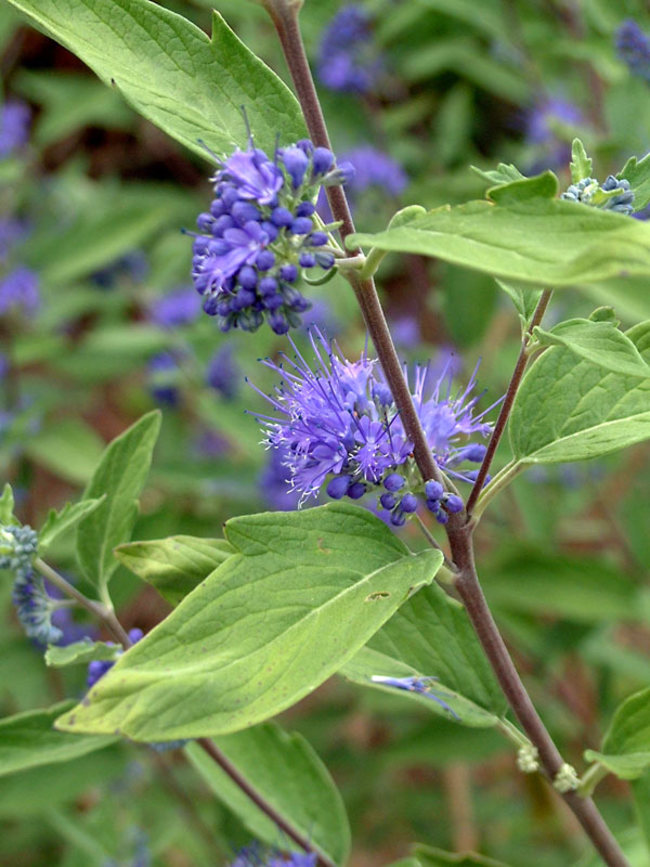Caryopteris Longwood Blue: The Ultimate Guide To Growing This Beautiful Shrub
Caryopteris Longwood Blue: The Ultimate Guide to Growing This Beautiful Shrub
Caryopteris Longwood Blue is a popular deciduous shrub that is known for its fragrant, blue flowers and silvery-gray foliage. It is a relatively easy plant to grow, and it is a great addition to any garden.
In this blog post, we will provide an ultimate guide to growing Caryopteris Longwood Blue. We will cover everything from choosing the right location to planting and caring for the shrub. By the end of this post, you will be an expert on growing this beautiful plant.
Introduction
Caryopteris Longwood Blue is a hybrid of Caryopteris incana and Caryopteris mongholica. It was selected at Longwood Gardens in Pennsylvania in the 1960s. The shrub is named for its long, blue flowers that bloom from midsummer to fall.
Caryopteris Longwood Blue is a hardy plant that can tolerate a wide range of conditions. It is drought-tolerant and deer-resistant. The shrub is also relatively pest-free.
Choosing the Right Location
Caryopteris Longwood Blue prefers full sun, but it can tolerate partial shade. The shrub will do best in well-drained soil. If your soil is heavy or clay-like, you will need to improve drainage before planting.
Planting
Caryopteris Longwood Blue can be planted in spring or fall. When planting, dig a hole that is twice as wide as the root ball. Backfill the hole with soil and water well.
Caring for Caryopteris Longwood Blue
Caryopteris Longwood Blue is a relatively low-maintenance plant. The shrub needs to be watered regularly, especially during the first year after planting. Once the plant is established, it can tolerate some drought.
Fertilize Caryopteris Longwood Blue in spring with a balanced fertilizer. You can also fertilize the shrub in fall, but avoid fertilizing too late in the season, as this can encourage new growth that will be susceptible to winter damage.
Pruning
Caryopteris Longwood Blue does not need to be pruned heavily. However, you can prune the shrub in spring to remove any dead or damaged branches. You can also prune the shrub to shape it or to keep it from growing too large.
Propagation
Caryopteris Longwood Blue can be propagated by cuttings or by division. To propagate by cuttings, take 4-6 inch cuttings in spring or summer. Root the cuttings in a well-draining potting mix.
To propagate by division, dig up a mature shrub in spring or fall. Divide the shrub into smaller clumps and replant the clumps.
Problems
Caryopteris Longwood Blue is a relatively problem-free plant. However, the shrub can be susceptible to powdery mildew and spider mites. If you see any signs of these problems, treat the shrub with a fungicide or an insecticidal soap.
Conclusion
Caryopteris Longwood Blue is a beautiful and easy-to-grow shrub that is a great addition to any garden. The shrub is drought-tolerant, deer-resistant, and relatively pest-free. With proper care, Caryopteris Longwood Blue will thrive for many years.
Caryopteris 'Longwood Blue' is a beautiful shrub that is covered in fragrant, violet-blue flowers from late summer into fall. It is a great addition to any garden, and is especially attractive to butterflies. If you are looking for a unique and colorful shrub, Caryopteris 'Longwood Blue' is a great choice.
For more information about Caryopteris 'Longwood Blue,' please visit Garden Wiki.
FAQ of caryopteris longwood blue
- Q: What are the care requirements for Caryopteris Longwood Blue? A: Caryopteris Longwood Blue is a low-maintenance shrub that is relatively easy to grow. It prefers full sun and well-drained soil. It is drought-tolerant, but it will benefit from regular watering during the summer months. Fertilize once a year in spring with a balanced fertilizer.
- Q: What are the benefits of growing Caryopteris Longwood Blue? A: Caryopteris Longwood Blue is a beautiful shrub that blooms in late summer and fall. It has fragrant blue flowers that attract butterflies and other pollinators. It is also a good choice for attracting birds to your garden.
- Q: How do I propagate Caryopteris Longwood Blue? A: Caryopteris Longwood Blue can be propagated from seed or cuttings. To propagate from seed, sow the seeds in spring in a well-drained potting mix. To propagate from cuttings, take 4-6 inch cuttings in early spring or late summer. Root the cuttings in a well-drained potting mix.
- Q: How do I prune Caryopteris Longwood Blue? A: Caryopteris Longwood Blue should be pruned in early spring, just after the new growth starts to appear. Prune the stems back by about one-third. This will encourage new growth and flowering.
- Q: What are some common problems with Caryopteris Longwood Blue?
A: A few common problems with Caryopteris Longwood Blue include:
- Leaf spot: This is a fungal disease that can cause brown spots on the leaves. To prevent leaf spot, water the plant regularly and avoid overhead watering.
- Pests: Caryopteris Longwood Blue can be susceptible to a few pests, including aphids, spider mites, and scale insects. To control pests, spray the plant with insecticidal soap or neem oil.
- Winter damage: Caryopteris Longwood Blue is hardy to USDA zones 5-9. In colder climates, the plant may be damaged by winter cold. To protect the plant, mulch it with a layer of organic matter in the fall.



Post a Comment for "Caryopteris Longwood Blue: The Ultimate Guide To Growing This Beautiful Shrub"